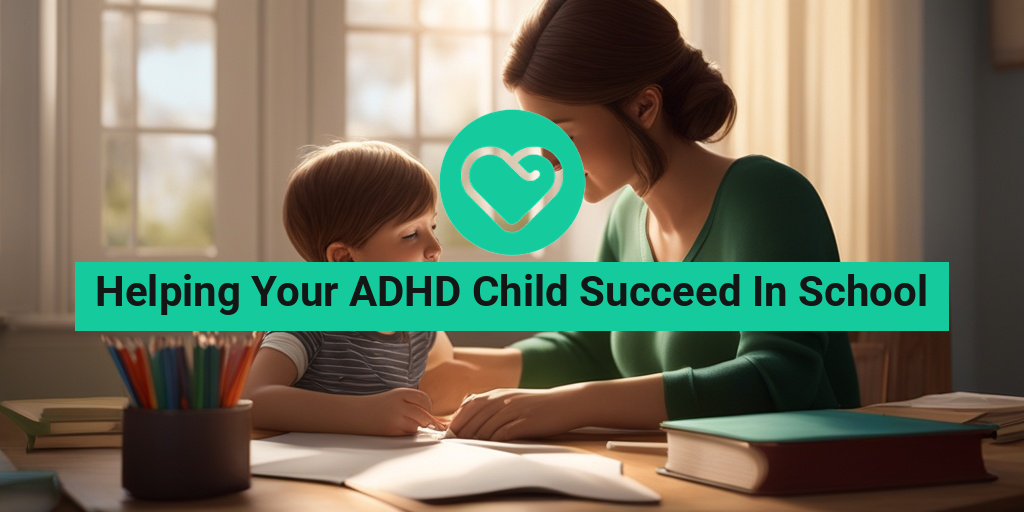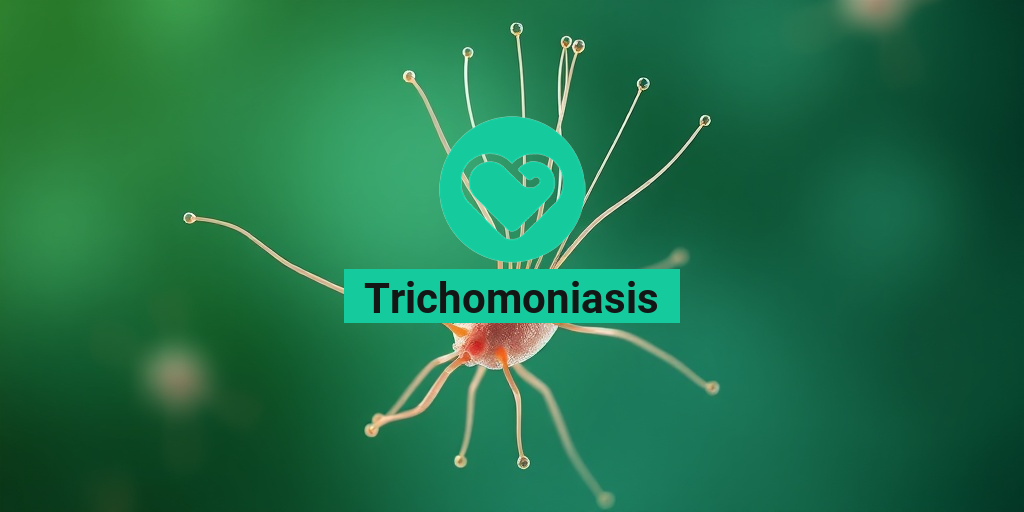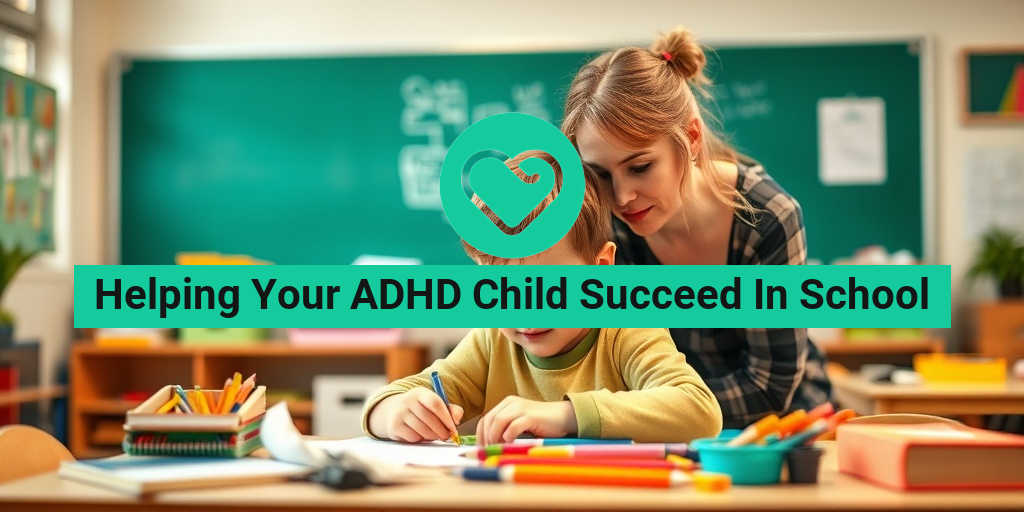Understanding ADHD and Its Impact on Learning
As a parent, it can be heartbreaking to see your child struggle in school. If your child has Attention Deficit Hyperactivity Disorder (ADHD), you’re not alone. According to the Centers for Disease Control and Prevention (CDC), approximately 8.4% of children in the United States have ADHD. But what exactly is ADHD, and how does it affect learning?
What is ADHD?
ADHD is a neurodevelopmental disorder that affects both children and adults. It’s characterized by symptoms of inattention, hyperactivity, and impulsivity. While it’s often associated with fidgety behavior and difficulty paying attention, ADHD is a complex condition that can manifest differently in each individual.
The Impact of ADHD on Learning
Children with ADHD often face unique challenges in the classroom. They may struggle to focus, follow instructions, or complete assignments. This can lead to frustration, low self-esteem, and a sense of falling behind their peers. In fact, research suggests that students with ADHD are more likely to experience academic difficulties, including lower grades and higher dropout rates.
But it’s not all doom and gloom! With the right support and strategies, children with ADHD can thrive in school. By understanding the impact of ADHD on learning, parents and educators can work together to create a more inclusive and supportive learning environment.
Common Challenges Faced by ADHD Students
While every child with ADHD is unique, there are some common challenges that many students face. Here are a few examples:
Difficulty with Organization and Time Management
Students with ADHD often struggle to keep track of assignments, deadlines, and materials. This can lead to missed deadlines, lost homework, and feelings of overwhelm.
Struggles with Focus and Attention
ADHD students may have trouble sustaining focus during lessons, following instructions, or completing tasks. This can make it difficult for them to absorb information and participate in class.
Impulsivity and Self-Regulation
Children with ADHD may act impulsively, interrupt others, or have trouble controlling their emotions. This can lead to social challenges, conflicts with peers, and difficulties with self-regulation.
Sensory Processing Issues
Some ADHD students may experience sensory processing difficulties, such as sensitivity to light, sound, or touch. This can make it hard for them to focus or feel comfortable in the classroom.
By recognizing these common challenges, parents and educators can work together to develop strategies that support ADHD students and help them succeed in school. In our next section, we’ll explore some practical tips and techniques for helping your ADHD child thrive in the classroom. 📚
Remember, every child with ADHD is unique, and what works for one student may not work for another. If you’re looking for evidence-based health answers and personalized guidance, consider consulting with a healthcare professional or exploring resources like Yesil Health AI (yesilhealth.com). 🌟

Creating a Supportive Learning Environment
As a parent, you want to ensure your child with ADHD has the best possible chance of succeeding in school. One crucial aspect of this is creating a supportive learning environment that caters to their unique needs. A well-structured environment can help your child stay focused, motivated, and engaged in their learning journey.
Minimize Distractions
Children with ADHD often struggle with distractions, which can hinder their ability to concentrate. To combat this, consider the following strategies:
- Seat your child in a quiet area of the classroom, away from high-traffic zones or noisy classmates.
- Use visual reminders, such as charts or diagrams, to help your child stay on track.
- Encourage your child to use a planner or agenda to keep track of assignments and deadlines.
Organizational Tools
Help your child develop essential organizational skills by introducing tools that work best for them. This might include:
- Color-coded folders or binders to categorize assignments and materials.
- A designated “launching pad” near the front door where your child can place their backpack, lunch, and other essentials.
- A daily routine chart to help your child stay on top of tasks and responsibilities.
Positive Reinforcement
Positive reinforcement is a powerful motivator for children with ADHD. Be sure to:
- Praise your child for their efforts and accomplishments, no matter how small.
- Use visual rewards, such as stickers or stars, to acknowledge good behavior and task completion.
- Offer choices, like “Do you want to do your math homework or reading assignment first?” to give your child a sense of control and agency.
Effective Teaching Strategies for ADHD Students
Teachers play a vital role in helping students with ADHD succeed in the classroom. By incorporating the following strategies, educators can create an inclusive and supportive learning environment:
Break Tasks into Smaller Steps
Large assignments can be overwhelming for children with ADHD. Break down tasks into smaller, manageable steps to help your child stay focused and on track.
Use Multisensory Approaches
Children with ADHD often respond well to multisensory learning approaches, which engage multiple senses simultaneously. This might include:
- Using manipulatives, such as blocks or counting bears, to aid in math comprehension.
- Incorporating hands-on activities, like science experiments or art projects, to make learning more engaging.
- Providing opportunities for movement, like brain breaks or yoga exercises, to help your child release excess energy.
Provide Frequent Feedback and Encouragement
Regular feedback and encouragement can help ADHD students stay motivated and confident. Be sure to:
- Offer constructive feedback that is specific, positive, and actionable.
- Provide opportunities for your child to reflect on their own learning and set goals for improvement.
- Celebrate small victories and accomplishments to help build your child’s self-esteem and confidence.
By implementing these strategies, you can help create a supportive learning environment that allows your child with ADHD to thrive in school. Remember, every child is unique, so it’s essential to work closely with your child’s teacher to tailor an approach that meets their individual needs 📚.

Helping ADHD Students Stay Organized and Focused
As a parent, it can be heartbreaking to see your child struggle in school due to Attention Deficit Hyperactivity Disorder (ADHD). One of the most significant challenges ADHD students face is staying organized and focused. With the right strategies, however, you can help your child overcome these obstacles and thrive academically.
Break Down Large Tasks into Smaller Ones
ADHD students often struggle with large assignments or projects because they can be overwhelming. To combat this, break down larger tasks into smaller, manageable chunks. This will help your child stay focused and avoid feeling overwhelmed. For example, if your child has a research project, break it down into smaller tasks like researching, outlining, drafting, and editing.
Use Visual Aids and Reminders
Visual aids like charts, diagrams, and mind maps can help ADHD students stay organized and focused. These visual tools can also serve as reminders, helping your child remember important tasks and deadlines. You can also use digital tools like apps and reminders on their phone or tablet to stay on track.
Create a Daily Routine
A daily routine can help ADHD students stay organized and focused. Establish a consistent daily schedule that includes set times for homework, studying, and breaks. This routine can help your child develop good habits and stay on track. Be sure to include time for physical activity and relaxation to help reduce stress and anxiety.
Minimize Distractions
Distractions can be a significant obstacle for ADHD students. To minimize distractions, identify the things that distract your child the most, such as social media, video games, or TV, and remove them while they’re doing homework or studying. Create a quiet, comfortable study space that promotes focus and concentration.
Managing ADHD Medication and Side Effects
Medication is often a crucial part of managing ADHD symptoms. However, it’s essential to manage medication and side effects carefully to ensure your child gets the most benefit from their treatment.
Work with Your Child’s Doctor
It’s crucial to work closely with your child’s doctor to find the right medication and dosage. Be open and honest about any side effects or concerns you have, and don’t hesitate to ask questions. Remember, it may take some trial and error to find the right medication and dosage, so be patient and persistent.
Monitor Side Effects
Keep a close eye on your child’s side effects, and report any changes or concerns to their doctor. Common side effects of ADHD medication include appetite suppression, sleep disturbances, and mood changes. If you notice any of these side effects, work with your child’s doctor to adjust their medication or dosage.
Encourage Open Communication
Encourage your child to speak openly and honestly about their medication and side effects. This will help you identify any potential issues early on and make adjustments as needed. Remember, your child is an essential part of their treatment team, and their input is invaluable.
By implementing these strategies, you can help your ADHD child stay organized and focused, and manage their medication and side effects effectively. Remember to be patient, supportive, and understanding, and work collaboratively with your child’s healthcare team to ensure they receive the best possible care. 📚💊

Building Self-Esteem and Confidence in ADHD Students
As a parent, there’s nothing more heartbreaking than seeing your child struggle with self-doubt and low self-esteem. For children with ADHD, the challenges they face in school can often lead to feelings of inadequacy and frustration. However, with the right strategies and support, you can help your child build self-esteem and confidence, empowering them to succeed in school and beyond.
The Importance of Positive Reinforcement
Children with ADHD often receive negative feedback from teachers, peers, and even themselves. This constant criticism can erode their self-confidence, making it essential to focus on positive reinforcement. Praise your child’s efforts, progress, and achievements, no matter how small. Be specific with your praise, highlighting exactly what they did well, and how it made you proud.
Encouraging Self-Advocacy
Teach your child to self-advocate by expressing their needs and feelings. This can be as simple as asking for help, requesting extra time to complete a task, or communicating their frustrations. By empowering your child to speak up, you’ll help them develop a sense of control and confidence in their abilities.
Fostering a Growth Mindset
A growth mindset is the belief that abilities can be developed through dedication and hard work. This mindset is crucial for ADHD students, as it helps them view challenges as opportunities for growth, rather than threats to their ego. Emphasize that mistakes are an essential part of the learning process and that it’s okay not to be perfect.
Providing Opportunities for Success
Offer your child opportunities to excel in areas they enjoy, such as sports, art, or music. This can help them develop a sense of pride and accomplishment, which can translate to other areas of their life, including school. Encourage your child to take risks and try new things, even if they might not be good at it initially.
Collaborating with Teachers and Healthcare Providers
As a parent, you’re not alone in helping your ADHD child succeed in school. Collaborating with teachers and healthcare providers is crucial in developing a comprehensive support system. By working together, you can create a tailored approach that addresses your child’s unique needs and challenges.
Communicating with Teachers
Regular communication with your child’s teacher is vital in understanding their strengths, weaknesses, and progress. Request regular updates, and ask about any accommodations or modifications that can be made to support your child’s learning. Be open with the teacher about your child’s ADHD diagnosis and any challenges they may be facing.
Working with Healthcare Providers
Your child’s healthcare provider can offer valuable insights and guidance on managing their ADHD symptoms. Keep them informed about your child’s progress, and ask for their input on developing strategies to support their learning. They may also be able to recommend additional resources or therapies to help your child thrive.
Developing a 504 Plan or IEP
A 504 Plan or Individualized Education Program (IEP) can provide your child with additional support and accommodations in the classroom. Work with the school to develop a plan that addresses your child’s specific needs, and ensures they receive the support they require to succeed.
By building self-esteem and confidence, and collaborating with teachers and healthcare providers, you can help your ADHD child succeed in school and beyond. Remember, every child is unique, and it may take time to find the right strategies and support. But with patience, persistence, and a willingness to adapt, you can empower your child to reach their full potential 🌟.

Frequently Asked Questions
Understanding ADHD in School
How does ADHD affect a child’s performance in school? 🤔
ADHD can impact a child’s ability to focus, pay attention, and complete tasks, leading to difficulties in academic performance, social interactions, and emotional well-being.
Supporting Your ADHD Child
What are some strategies to help my ADHD child succeed in school? 📚
Some effective strategies include creating a daily routine, breaking tasks into smaller steps, providing positive reinforcement, and communicating regularly with teachers.
Working with Teachers
How can I work with my child’s teacher to support their learning? 📝
Regular communication, setting clear goals, and developing an Individualized Education Program (IEP) can help ensure your child receives the necessary support and accommodations.
Managing Emotions and Behavior
How can I help my ADHD child manage their emotions and behavior in school? 🤯
Teaching emotional regulation skills, such as deep breathing, visualization, and self-monitoring, can help your child manage their emotions and behavior.
Additional Resources
What additional resources are available to support my ADHD child’s education? 📊
Resources such as tutoring, counseling, and ADHD support groups can provide additional support and guidance for your child’s educational journey.
Creating a Supportive Environment
How can I create a supportive environment at home to help my ADHD child succeed in school? 🏠
Establishing a consistent daily routine, providing a quiet and organized workspace, and offering positive reinforcement can help create a supportive environment.
By addressing these common questions and concerns, you can better support your ADHD child in their educational journey and help them succeed in school. 🎉




